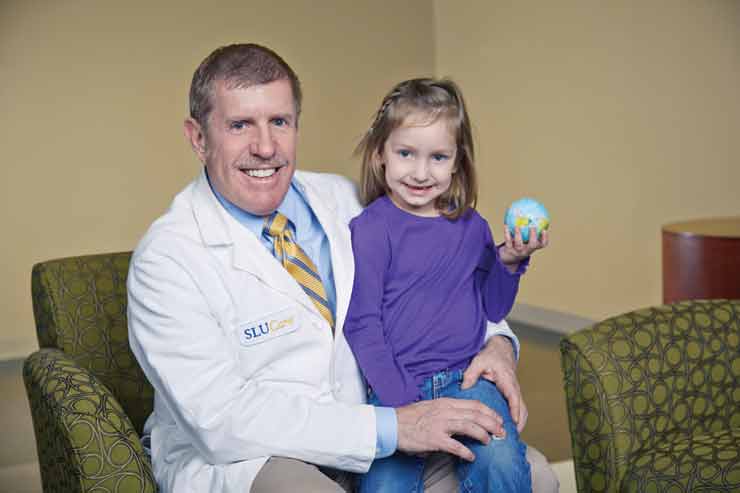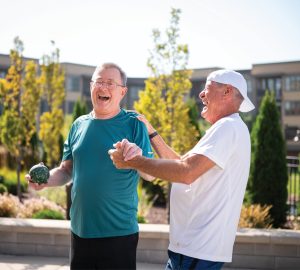Trucker Manuel Herrera was fixing an engine when a new driver turned on the ignition. Herrera’s hand got stuck in the fan belt. When he pulled it out, the ends of three fingers had been torn off. Florist Walter Knoll was doing a woodworking project when a circular saw blade slipped, slicing through his thumb at a speed of 3,000 rpm.
These men earn their living with their hands. But both suffered such severe damage they were candidates for amputation, and both feared they would never regain their manual dexterity. Then they met board-certified plastic surgeon Dr. Bruce Kraemer of SLUCare, the physicians of Saint Louis University. Today, a glance at their hands reveals all digits present and accounted for— and fully functioning. No, their appendages weren’t surgically reattached or reconstructed. They actually grew back.
Kraemer, director of plastic surgery at SLU School of Medicine, battles devastating traumatic injuries every day. Now he has a new weapon: a regenerative compound that heals severed or severely injured body parts—and helps them grow back. “So far, we’ve used it on 60 individuals with outstanding results,” he says. “We’ve healed wounds, repaired ruptured Achilles tendons, and regrown parts of limbs.” SLUCare physicians were the first to bring this technology to St. Louis, he adds.
The compound, MatriStem extracellular matrix, sounds like the stuff of science fiction. But it was developed during 20 years of research at Purdue University. The substance is derived from pig bladder, which has a collagen protein structure similar to that of human tissue. The powder is sprinkled on the wound every other day or so and then wrapped in a moist dressing. “The compound acts as a scaffold that supports the body’s cells as they heal, and also supplies growth factors that promote healthy tissue,” Kraemer explains.
Normally, the body produces painful, unsightly scar tissue as it heals. “Scarring can lead to a lifetime of restricted movement and other issues,” Kraemer says. “But the extracellular compound turns the healing process up and the scarring process down, allowing the body to regenerate healthy cells and blood vessels, without scarring.”
The U.S. government is now looking toward extracellular matrix materials as an alternative to standard amputation procedures, Kraemer notes. “Think of the thousands of war veterans whose limbs could be restored,” he says.
Herrera, injured nearly four years ago, began to see tissue regrowth within a week of treatment; four months later, the ends of his fingers had completely regenerated. Knoll’s thumb tip, severed a year and a half ago, returned within 10 weeks, complete with fingerprint ridges. Today, Herrera has regained full sensitivity in his fingers. “I can feel my kids when I hug them,” he says. And Walter Knoll, an avid musician, is back at the piano. “I was a big hit at all the holiday parties,” he says. “Thanks to Dr. Kraemer, I’m whole again.”
Photo by SLUCare
Pictured: Four-year-old Madison Harmon’s ring and index fingers, bitten off by a dog, were restored by Dr. Kraemer.
[For more information, call 314.577.8793 or visit slucare.edu. For more information, call 314.400.5000 or visit greenwayfamilyoffice.com.]








